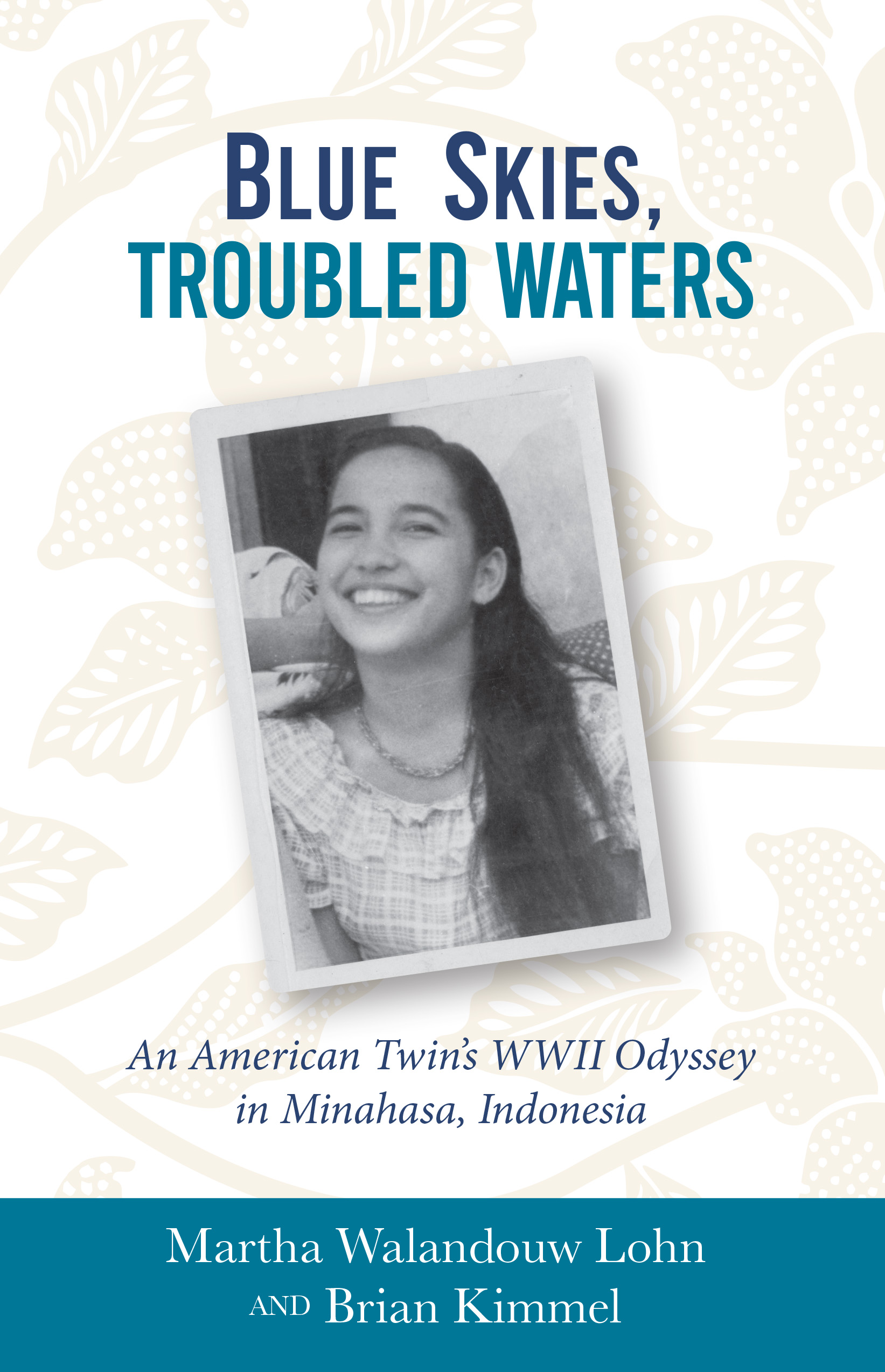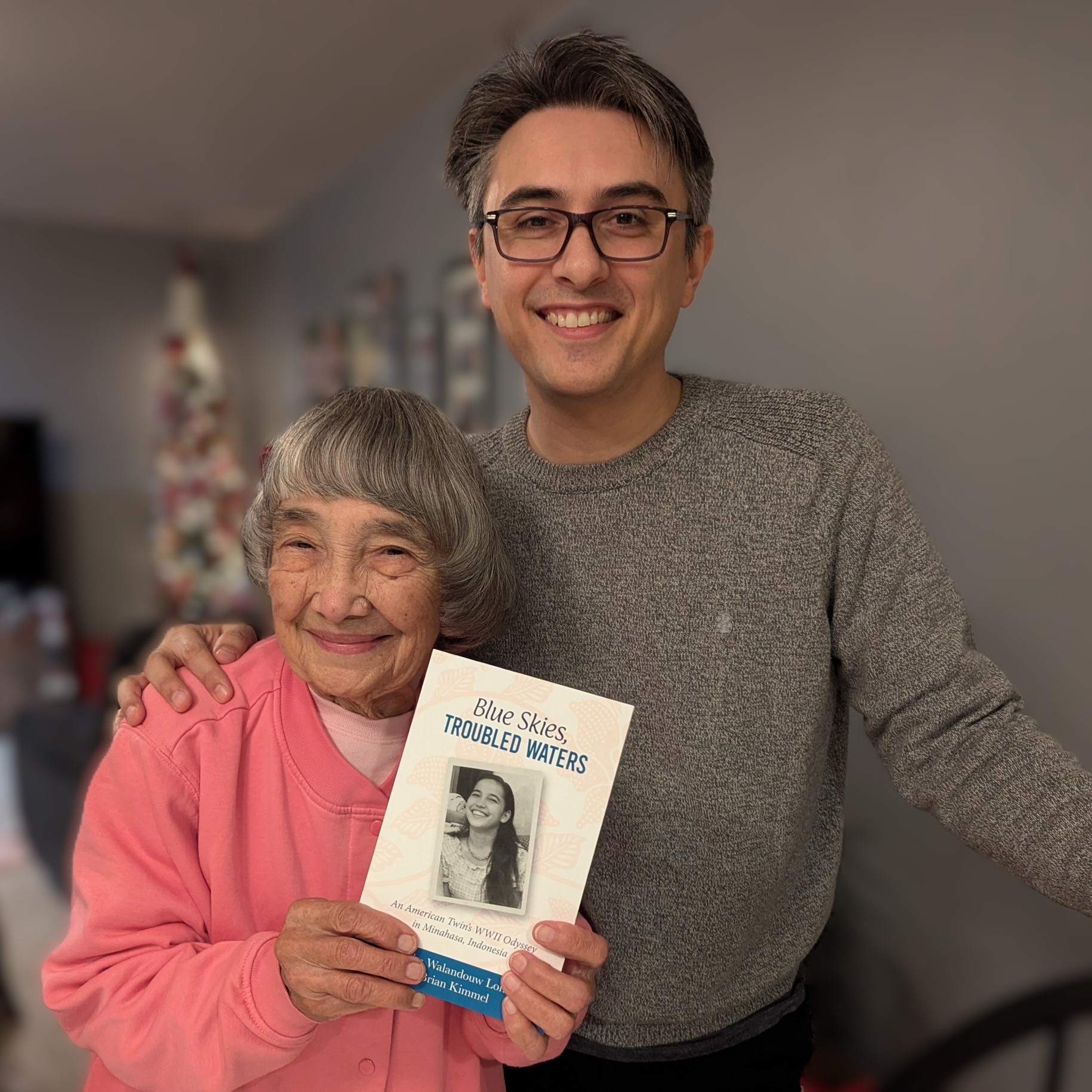My grandmother’s story begins with a jump.
In the dead of night, her father, a young man from the Dutch East Indies, leaped from the deck of a Dutch military vessel into the frigid, murky waters of Brooklyn Harbor and swam for the shore. For 13 years, he lived as an undocumented immigrant in Elizabeth, New Jersey, building a life and a family while working at a local dye factory. But after my grandmother and her twin were born, his conscience led him to immigration services. The family’s reward for his honesty was deportation. “Deported with a smile,” read the newspaper caption.
They landed back in Indonesia just in time for the Japanese invasion. The family that had sought a better life in America would instead spend World War II as civilian prisoners of war.
Years later, on her 90th birthday, my grandmother handed me her written memoir. “It’s yours now,” she said. “I want you to bring it forward.” In that moment, I inherited not just a manuscript, but a profound responsibility. I had to learn how to truly embody her narrative—to carry its weight with integrity and ensure her story of hope and resilience in the face of harrowing injustice was not only preserved but understood.
This was a story of the Pacific Front, a theater of war often overlooked in American narratives. It was a woman’s perspective on survival. And it was a story haunted by the hard truths of American history; the Asian Exclusion Act and National Origins Acts of the era made it impossible for my grandmother’s father to naturalize, despite being an employed, contributing member of his community who volunteered for the Salvation Army.
 Yet, the family’s love for America endured. During the war, my grandmother risked her own life to save her family’s United States flag and to assist the allied forces in counterattacks. This story, Blue Skies, Troubled Waters: An American Twin’s WWII Odyssey in Minahasa, Indonesia, needed to be told. The question was, how?
Yet, the family’s love for America endured. During the war, my grandmother risked her own life to save her family’s United States flag and to assist the allied forces in counterattacks. This story, Blue Skies, Troubled Waters: An American Twin’s WWII Odyssey in Minahasa, Indonesia, needed to be told. The question was, how?
The Fork in the Road: Why Indie Publishing Was the Only Way
The decision to publish independently was not a backup plan; it was a conscious choice rooted in the very nature of the story itself.
First, there was time. My grandmother was alive, and the glacial pace of traditional publishing was a luxury we couldn’t afford. Going indie gave us control over the timeline, ensuring she could hold the finished book in her hands.
Second, it was a matter of integrity and translation. This is a legacy story, one that touches on the preservation of indigenous Indonesian languages and traditions. How could we handle a racial epithet for the Japanese that appeared in the original text? In the Indonesian language, the word is simply Jepang. After much discussion with consultants and our family, we chose to change the word in the English version, but to include a note explaining the context and our choice—a decision to heal racial oppression rather than perpetuate it. We feared a traditional publisher, driven by different priorities, might not afford us the nuance and control to make such culturally sensitive decisions.
Indie publishing aligned with the soul of the book. My grandmother and her family survived because of their community. It was the power of their connections that saw them through starvation, disease, and imprisonment. To honor that, the publishing process itself had to be about building community, not just selling units.
The Grueling, Gratifying Work of Building a Press
I knew I couldn't do it alone. I contracted a publishing consultant for weekly calls and “speed dial” support. She became my guide through the labyrinthine world of the book industry.
The first hurdle was the manuscript itself. I was naive enough to think it was nearly done. Instead, I spent months making painstaking changes to conform to publishing standards and ensure the narrative was clear for a reader who hadn’t grown up hearing these stories. The anxiety was immense. The psychological and emotional toll of bringing such a personal, traumatic story to light is not to be underestimated. There were moments when I felt I was on the verge of breaking, and I leaned heavily on my consultant, my family, and my friends to stay grounded.
This experience taught me the most vital lesson of indie publishing: You cannot do it alone, and you must build in space to step away. The work is all-consuming. Protecting your own well-being isn't a luxury; it’s essential for gaining the perspective you need to see your work clearly. It is the practical application of somatic awareness—listening to the story your own body is telling amid the stress of production.
Marketing as Community Building
When it came time to market the book, I eschewed high-cost ad campaigns for a strategy that mirrored the book’s core message: direct, human connection. I make phone calls, send personal emails, give talks, and partner with community-based organizations like Indonesian cultural centers and indie bookstores. My contact spreadsheet isn't a list of leads; it’s my community.
IBPA has been a cornerstone of this community. The discounts on IngramSpark orders are invaluable, allowing me to sell direct-to-consumer at events. I read every issue of IBPA Independent and every email, taking advantage of opportunities like member highlights and book launch promotions. IBPA provides the structure and network that helps indies like me connect the dots, lift each other up, and amplify our stories. As indies, we may not have the deep pockets of a traditional house, but we have something more powerful: each other.

A Living Legacy
When I see Blue Skies, Troubled Waters in the world, the word that comes to mind isn't “pride” but “gratitude.” I am grateful to every reader who has shared their own family’s story with me in return. The book has become a vehicle for connection, a talking piece that helps us understand ourselves through the lens of history. My deepest hope is that this book will outlive me, that the memory of what my family and so many others endured will serve as a powerful reminder of the human cost of war and exclusion.
This journey with my grandmother’s story crystallized my life’s work. It taught me that we all carry these powerful, inherited narratives, and that learning to see them, hold them, and weave them with intention is the path to healing. This realization is the foundation of my practice and my next book, Embodying Narratives, which offers a guide for anyone to engage with their own story. It all started with a jump into a frigid, murky harbor—a leap of faith that continues to ripple outward, becoming a bridge not just to the past, but to a more connected future for all of us.
Brian Kimmel is the co-author of Blue Skies, Troubled Waters and publisher at Together Mapalus Press. As a therapist, artist, and Buddhist teacher, his work focuses on how we can connect with our personal and collective stories to live with more courage and wholeness. He is the author of the forthcoming book, Embodying Narratives: A practical journey into the stories our bodies tell and the courage it takes to live them. Learn more about his work at briankimmel.com.